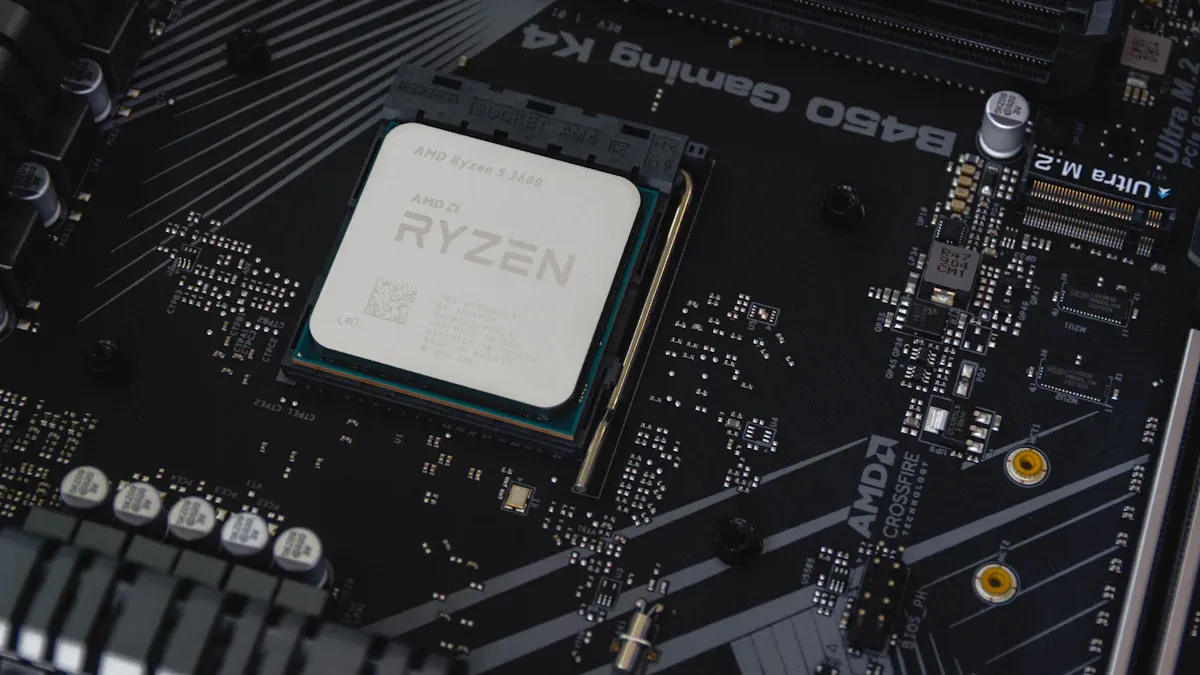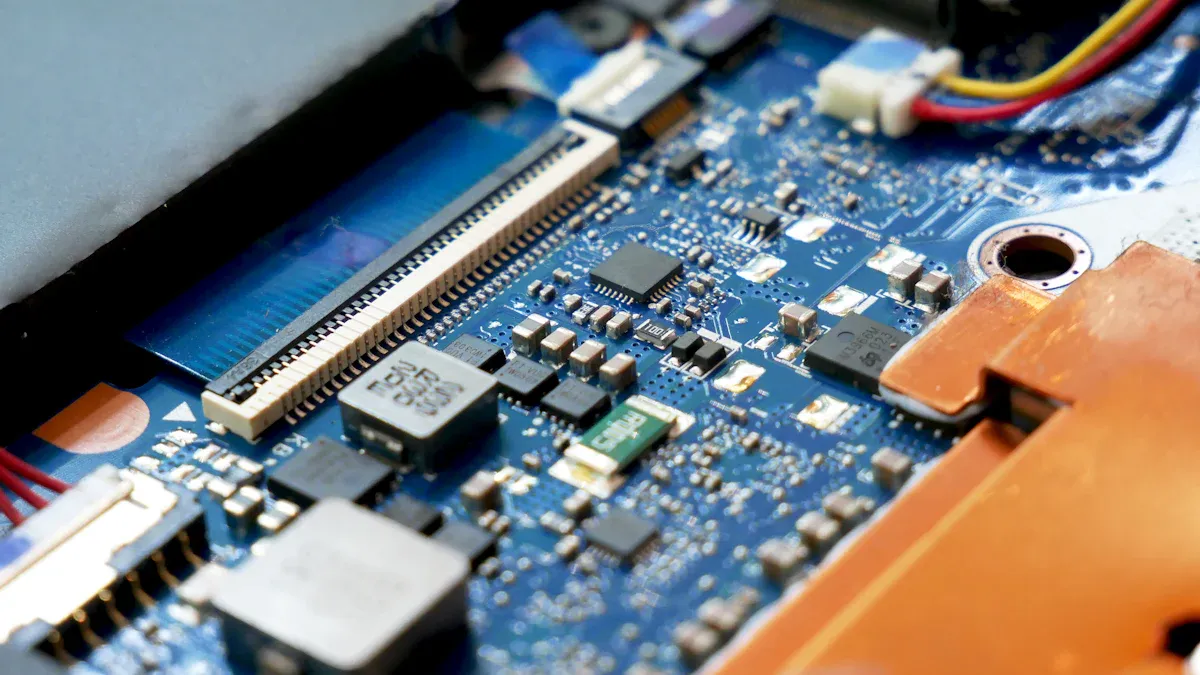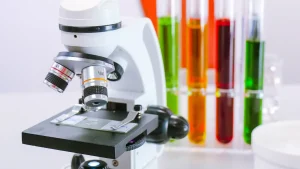
You depend on cutting-edge materials like SiC-coated graphite susceptors to enhance semiconductor manufacturing. These components, designed to withstand corrosive environments such as NH3 and Cl2, ensure long-lasting durability. While a TAC-coated graphite susceptor provides reliable performance, SiC-coated options deliver superior protection. Advanced graphite coating techniques further improve functionality, solidifying the role of graphite susceptors as indispensable for accurate and efficient semiconductor processes.
Key Takeaways
- Graphite parts with SiC coating last longer and resist damage better.
- New coating methods help them move heat faster and last longer, saving money on repairs and replacements.
- Using thick SiC coatings makes them work well in tough conditions, helping new semiconductor technology needs.
SiC-Coated Graphite Susceptors in Semiconductor Manufacturing

Role and Functionality in Semiconductor Processes
You rely on SiC-coated graphite susceptors to support critical steps in semiconductor manufacturing. These components act as carriers for wafers during processes like chemical vapor deposition (CVD) and epitaxy. They ensure uniform heat distribution, which is essential for creating high-quality semiconductor layers. Without them, achieving the precision required for advanced semiconductor devices would be nearly impossible. Their ability to withstand extreme temperatures and corrosive gases makes them indispensable in modern fabrication facilities.
Key Properties of SiC Coatings
The silicon carbide (SiC) coating on these susceptors provides several key advantages. It offers exceptional thermal conductivity, allowing for efficient heat transfer during high-temperature processes. Its hardness and chemical stability protect the underlying graphite from damage caused by reactive gases. Additionally, the SiC coating resists wear and oxidation, extending the lifespan of the susceptor. These properties make the SiC-coated graphite susceptor a reliable choice for demanding semiconductor applications.
Challenges in Corrosive Environments
Corrosive environments, such as those involving ammonia (NH3) and chlorine (Cl2), pose significant challenges. These gases can react with materials at high temperatures, leading to degradation over time. For susceptors, maintaining the integrity of the SiC coating is critical. Even minor defects can expose the graphite substrate, resulting in rapid corrosion. You must carefully monitor and maintain these components to ensure consistent performance in such harsh conditions.
Corrosion Mechanisms in NH3 and Cl2 Environments
Chemical Interactions with SiC Coatings
You encounter unique challenges when exposing silicon carbide (SiC) coatings to reactive gases like ammonia (NH3) and chlorine (Cl2). These gases can chemically interact with the SiC layer, leading to gradual degradation. For example, NH3 can react with silicon atoms in the coating, forming volatile silicon-nitrogen compounds. Similarly, Cl2 can attack the carbon bonds, weakening the coating structure. These reactions compromise the protective barrier, exposing the graphite substrate to further damage. Understanding these interactions helps you predict and mitigate potential failures in your SiC-coated graphite susceptor.
Effects of High Temperatures on Corrosion
High temperatures amplify the corrosive effects of NH3 and Cl2. You might notice that at elevated temperatures, the chemical reactions between the gases and the SiC coating accelerate. This happens because heat increases the energy of the molecules, making them more reactive. For instance, Cl2 can form silicon tetrachloride at high temperatures, which erodes the coating. The combination of heat and reactive gases creates a harsh environment that demands robust materials to maintain performance.
Experimental Insights into Corrosion Behavior
Researchers have conducted experiments to study how SiC coatings behave under these conditions. They often simulate NH3 and Cl2 environments at various temperatures to observe the degradation process. Results show that denser SiC coatings with fewer defects resist corrosion more effectively. Advanced imaging techniques, like scanning electron microscopy (SEM), reveal how cracks or pinholes in the coating can accelerate damage. These insights guide you in selecting or designing susceptors with improved durability.
Advancements in SiC-Coated Graphite Susceptor Technology

High-Density SiC Coatings for Enhanced Protection
You benefit from advancements in high-density SiC coatings, which offer superior protection for your susceptors. These coatings reduce the number of microscopic pores and defects, creating a more uniform and durable surface. A denser coating acts as a stronger barrier against corrosive gases like NH3 and Cl2. This improvement minimizes the risk of chemical reactions that could degrade the susceptor. Researchers have also found that high-density coatings improve thermal stability, ensuring consistent performance during high-temperature processes. By choosing susceptors with these coatings, you can extend their lifespan and reduce maintenance needs.
Improved Grain Boundary Strength
Grain boundaries in SiC coatings often act as weak points where corrosion begins. Recent advancements focus on strengthening these boundaries to enhance durability. You can now rely on coatings with optimized microstructures that resist cracking and chemical attacks. Strengthened grain boundaries also improve the mechanical integrity of the coating, making it less likely to fail under thermal stress. This innovation ensures that your SiC-coated graphite susceptor remains reliable even in the most demanding environments. Improved grain boundary strength directly translates to better performance and lower operational costs.
Innovations in Coating Techniques and Materials
New coating techniques and materials have revolutionized the production of SiC-coated graphite susceptors. Advanced methods, such as chemical vapor deposition (CVD), allow for precise control over coating thickness and uniformity. You can now access susceptors with tailored properties to meet specific manufacturing needs. Additionally, researchers are exploring hybrid materials that combine SiC with other compounds for enhanced performance. These innovations ensure that your susceptors stay ahead of the challenges posed by modern semiconductor processes. By adopting these cutting-edge technologies, you can achieve greater efficiency and reliability in your operations.
Impact of Advancements on the Semiconductor Industry
Increased Durability and Efficiency
You gain significant benefits from the improved durability and efficiency of modern SiC-coated graphite susceptors. These advancements allow the susceptors to withstand harsher environments and higher temperatures without degrading. This means you can rely on them for longer periods, even in demanding semiconductor processes. The enhanced thermal conductivity of the SiC coating ensures consistent heat distribution, which improves the quality of wafer production. With fewer interruptions caused by material failures, your manufacturing processes become more efficient and predictable.
Cost Savings in Maintenance and Replacement
The extended lifespan of SiC-coated graphite susceptors directly reduces your maintenance and replacement costs. Frequent replacements disrupt production and increase expenses. By using susceptors with advanced coatings, you minimize these disruptions. The improved resistance to corrosion and wear means you spend less time and money on repairs. Over time, this translates into significant savings for your operations. You also benefit from reduced downtime, which helps you meet production targets more effectively.
Support for Next-Generation Semiconductor Technologies
Next-generation semiconductor technologies demand materials that can handle extreme conditions. SiC-coated graphite susceptors meet these requirements by offering superior performance in high-temperature and corrosive environments. As you adopt advanced processes like 3D chip stacking or ultra-thin wafer production, these susceptors provide the reliability you need. Their ability to maintain structural integrity under stress ensures they can support the precision required for cutting-edge devices. By investing in these advancements, you position yourself to stay competitive in the rapidly evolving semiconductor industry.
Advancements in the sic coated graphite susceptor have revolutionized semiconductor manufacturing. You now benefit from improved durability, efficiency, and resistance to harsh environments. Corrosion resistance remains critical for maintaining performance in extreme conditions. Future innovations in SiC coatings promise even greater reliability, enabling you to meet the demands of next-generation semiconductor technologies.
FAQ
What makes SiC-coated graphite susceptors better than uncoated ones?
SiC coatings provide superior thermal conductivity, chemical stability, and corrosion resistance. These properties protect the graphite substrate, ensuring longer lifespan and better performance in semiconductor manufacturing.
How do SiC-coated susceptors handle high temperatures?
SiC coatings maintain structural integrity at extreme temperatures. Their thermal stability ensures consistent heat distribution, which is critical for high-quality wafer production in semiconductor processes.
Can SiC-coated graphite susceptors reduce manufacturing costs?
Yes! Their durability minimizes maintenance and replacement needs. This reduces downtime and operational costs, making them a cost-effective choice for semiconductor manufacturing.






